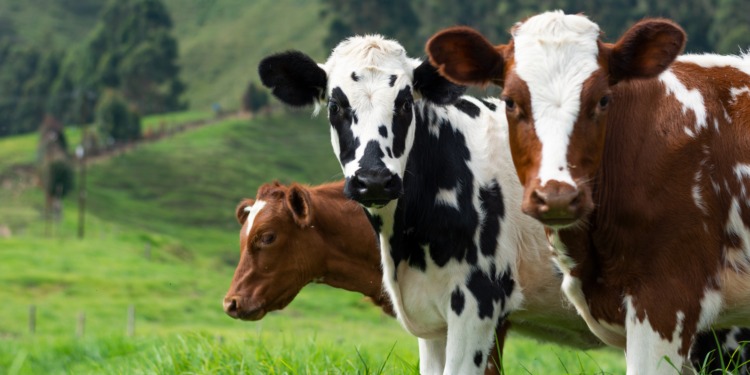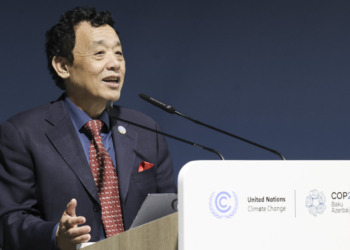On October 10, New Zealand’s Prime Minister Jacinda Ardern, Agriculture Minister Damien O’Connor, and Climate Change Minister James Shaw gathered on a farm in Wairarapa on the southeastern corner of the North Island. The goal of the visit was to announce a new plan for reducing and regulating emissions from New Zealand’s agricultural industry.
This proposal is the first of its kind in the world, but New Zealand’s farmers claim it will be their sector’s end.
Methane and carbon dioxide on New Zealand’s farms
At the time of writing, agriculture is the only sector in New Zealand that is not taxed on its emissions. The regulations on the other sectors all fall under the New Zealand Emissions Trading Scheme (ETS). This scheme is meant to incentivise private industry to offset its carbon footprint both by setting a cap on emissions and making companies pay for the emissions they produce.
Carbon dioxide is the only gaseous emission that has a currency value in this scheme, since most sectors emit far more carbon than methane or nitrous oxide, the other two most common greenhouse gases.
Agriculture has been excluded from this scheme, because the agricultural sector both emits more methane than it does carbon dioxide and causes more total methane emissions than any other sector. Whilst carbon dioxide is the key concern in most sectors, in Agriculture, methane is king.
This excludes it from the ETS because methane and carbon dioxide are not equal in their ability to be stored and therefore offset. Methane has fewer natural ways of being “sunk” or “sequestered” back into the environment. With carbon, on the other hand, planting trees is a relatively efficient way of offsetting carbon production which has very little effectiveness for storing methane.
New Zealand in particular is concerned about methane because 48% of its emissions come from its agriculture industry, which is its primary sector. Methane has a much more powerful greenhouse effect than carbon, which means that although New Zealand only contributes approximately 0.17% of the world’s gross emissions, those emissions contribute disproportionately to their greenhouse effect.
The proposed plan
This new proposal is the result of a 2019 agreement between New Zealand’s government, farming leaders and Māori, known as the He Waka Eke Noa Primary Sector Climate Action Partnership, the ultimate goal of which is to reduce agricultural emissions.
Prime Minister Ardern listed three key priorities in formulating the plan: “that it is pragmatic, can be introduced in a timely way, and that it will actually bring down emissions.”
The target timeframe, which heavily informs the content of the plan, sees the proposal go into effect in 2025 and help New Zealand reach its 2030 emissions targets, which were defined at COP26 as 30% below 2020 levels.
The plan relies on setting a levy on emissions, the actual price of which is yet to be determined. One of the key points of contention between the government and the sector is the fact that the sector proposed that they set this levy, but the government chose to be the final arbiter along with heavy input from He Pou a Rangi, their independent Climate Change Commission.
All the revenue generated by this plan will be reinvested in the sector in order to fund further research, tools, and technology as well as farmer incentives in order to help reduce emissions.
According to the modelling in the proposal, only a quarter of the target emission reductions will be a direct result of the levy, the other three-quarters resulting from these incentive payments.
In her speech, the Prime Minister made it clear that they were aware that the dry stock sect of the industry, mainly cows, sheep, and deer, would be disproportionately affected, both due to the innate level of emissions from these animals compared to other livestock and the economics of the higher price point of those meats. However, she assured that the “government remains open to providing support including transitional support.”
New Zealand’s largest export is meat, and Ardern pointed out that the world is becoming increasingly discerning about the sustainability of their food sources.
“In three major export markets for New Zealand, the majority of consumers in those markets were willing to pay up to a 20% increase in price if they knew the product was sustainable,” she noted in her speech.
There is hope from experts that this increase in potential sale value will create profit for the sector that will help it adjust to these new taxes for now and will provide an incentive for them to carry the practices through into the future.
Related Articles: How to Make Agriculture Carbon-neutral: Lessons from Denmark | Orbio Earth Raises €600k to Help Curb Industrial Methane Emissions | Why Global Prosperity Cannot Be Hurt by Methane Emissions From Livestock
One of the main concerns of the current government is that, if they produce a plan that is deeply unpopular to the sector, the next government will quickly dismantle it. During the media interview, the panel admitted that compromises have been made in order to ensure the plan’s longevity, rather than prioritising a perfect arrangement for now that might last less than a decade, thereby preventing the country from reducing emissions at all.
Originally, the plan included an absolute cap on emissions, but this was rejected due to fears that it would be impossible to prepare a system for monitoring and regulating this by 2025.
One of the main differences between this plan and the ETS that governs the rest of New Zealand’s industry is that the plan aims to reduce gross emissions of methane, instead of attempting to achieve net-zero emissions (methane produced minus methane sequestered).
This means that rather than being able to plant trees to offset some of their emissions, the farmers of New Zealand are being asked to change their ways of working in order to reduce the total amount of methane emission being produced.
One thing that was left unclear by the end of the press conference was exactly how New Zealand is suggesting that farmers reduce their methane emissions, since these are primarily a consequence of biological processes such as urinating, burping, and passing gas, which cannot be avoided.
When asked about this, Ardern responded that they were looking into “everything from effluent to feed to stocking.” The Prime Minister also noted that changes in land use would likely be necessary to reach emissions targets. No further detail was given at the time.
Although this plan was created in order to account for the unique situation of agriculture as a methane-heavy industry, it includes regulations for carbon emissions as well. O’Connor, the Agriculture Minister, cited solar panels and electric vehicles as practicable methods for achieving carbon neutrality.
Minister O’Conner also cited changes to pasture species as one method that was considered for reducing methane emissions. Whilst the possibility of breeding livestock selectively based on methane emission has been studied and discussed widely, there is no consensus about whether this is practical and achievable within the necessary time limits.
Did you miss our State of Science webinar with @LICnz on breeding low-methane dairy cattle? Never fear, a recording is available! Happy Friday🐄https://t.co/WGltWuSKbJ pic.twitter.com/Q00VkhqfXY
— NZAGRC (@nzagrc) September 1, 2022
It is possible that a more effective short-term solution will include changes to the livestock’s diets. There is research suggesting that seaweed supplements can affect the gut microbiome of a cow and consequently reduce its emissions.
This announcement marked the beginning of the consultation period, during which the government and related parties will give and receive feedback in order to make adjustments before the plan comes into effect.
The plan’s critics
Federated Farmers, the sector’s main lobby union, declared that this proposal “will rip the guts out of small town New Zealand, putting trees where farms used to be.”
Many farmers feel that, by increasing the cost of operating, the government will be pricing smaller farms out of the sector, making way for larger farming corporations or reducing the presence of the sector in the country as a whole.
Ardern countered this claim by pointing out that recommendations from workers in the primary sector had formed the backbone of this plan, and that the premium placed on “low-emission” meat would make up for the increased cost.
Many critics also focussed on what this could do to food prices in the country. New Zealand, like much of the world currently, is facing a cost-of-living crisis that this plan could exacerbate. In response to questions, Ardern focussed heavily on the possibility of increased profits for farmers from the international export market, but did not mention whether the higher costs of operation would be passed along to consumers within New Zealand’s domestic market.
One reporter asked whether this plan could really be considered a sustainable solution, since its profitability relies heavily on exporting the product overseas, a carbon-heavy task for such a remote island.
Ardern responded, “[We will] work through all parts of our supply chain. Obviously what we’re dealing with here today is the production and the products themselves.”
New Zealand’s agriculture accounts for approximately 0.08% of the world’s greenhouse gas emissions. It is unlikely that this program alone will make a significant difference to the warming trend that the globe is currently experiencing. However, in trialling solutions to methane-heavy agricultural emissions, New Zealand might be able to construct and offer a basic template to other countries wishing to reduce their own emissions.
It is possible that this experiment will benefit everyone by helping to shift worldwide agriculture towards new ways of working, but for now, New Zealand’s farmers do not seem to appreciate being treated as the globe’s guinea pigs.
Editor’s Note: The opinions expressed here by Impakter.com columnists are their own, not those of Impakter.com — Featured Photo: Cattle in a field. Featured Photo Credits: Daniel Quiceno M.










